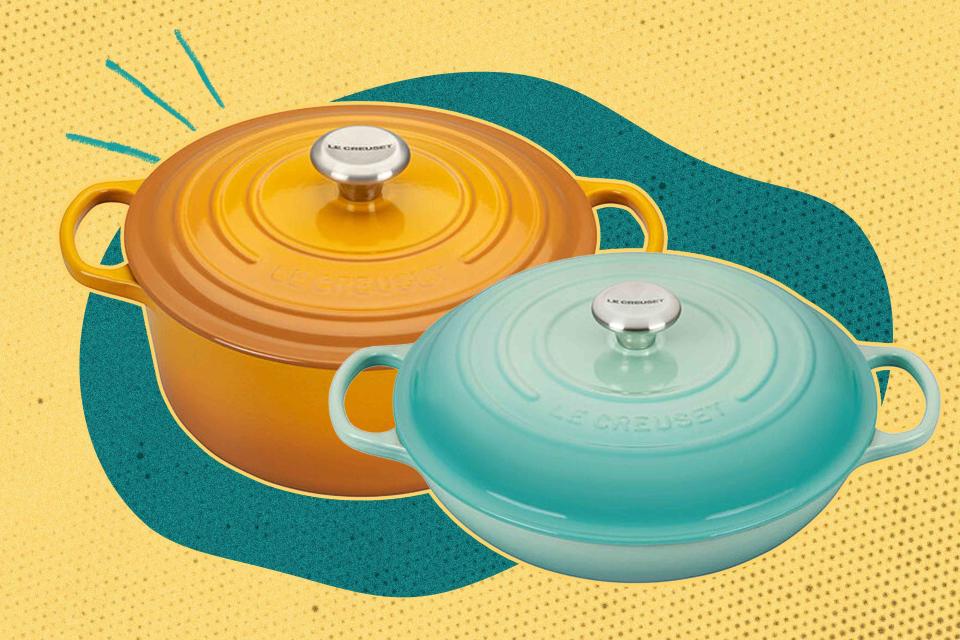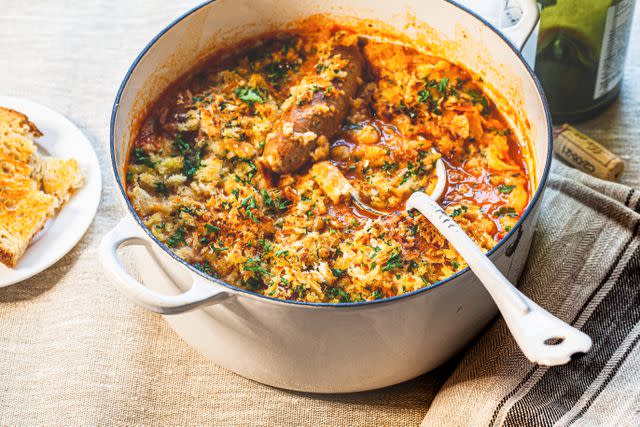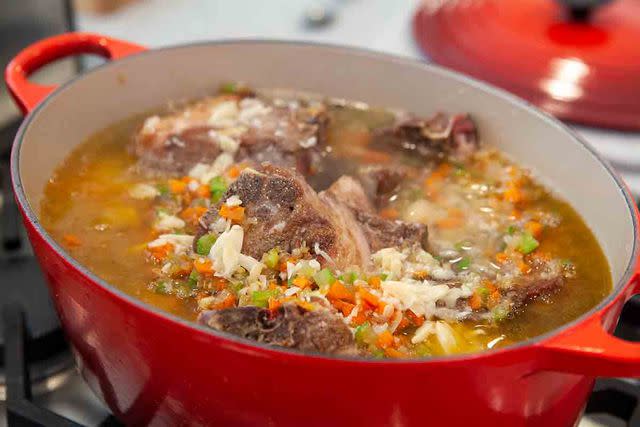Dutch Oven vs. Braiser: Le Creuset Explains the Difference
Which is the better option for your kitchen?

Simply Recipes / Photo Illustration by Wanda Abraham / Retailers below
Doesn't it feel like there are endless options for cookware out there these days? From the plethora of ceramic nonstick pans I see everywhere I go to the colorful baking sheets my algorithm keeps feeding me... I’m a little overwhelmed when it comes to outfitting my kitchen with new cookware.
This is why, in hopes of finding a do-it-all piece, I began to look into buying a Dutch oven. But in doing some preliminary research, I stumbled across a similar kitchen essential, a braiser, that left me a little confused. Between two similar culinary workhorses, which one do I actually need to simplify my cookware collection and ease everyday cooking?
Unsure of which way to lean—Dutch oven or braiser—I reached out to Le Creuset to get the scoop on the difference between the two.

Simply Recipes / Sally Vargas
The Difference Between a Dutch Oven and a Braiser
Braisers and Dutch ovens are usually crafted with the same material—enameled cast iron—so don’t worry about differing quality in heat retention or staining. They do have different shapes, which affects how food cooks in them.
“A braiser's shallow shape and rounded lid allow ingredients to interact with wet and dry heat at the same time, keeping food moist and tender throughout the cooking process,” says the expert I spoke to from Le Creuset. It also has a roomy cooking surface which is ideal for searing meat or veggies.
In contrast, shares the expert, “A Dutch oven is large enough to prepare family-sized portions as the tall, enameled cast iron walls lend themselves well for meals that require a lot of liquid. It locks in heat and moisture, slow-cooking your stew perfectly.”

What Is Each Best Used For?
Dutch Oven: A Dutch oven can tackle soups and stews but also other projects that require high walls like deep frying, toffee-making, or bread baking. It’s good for large portions and one-pot wonders.
Braiser: A braiser, on the other hand, has that aforementioned large surface area for searing or pan frying without overcrowding, and also works for baking things like pizza or scones—it’s versatile and a good all-around pan for a variety of dishes that require more surface area to cook.
“Both options are great investments,” shares my source at Le Creuset, “so it really comes down to what kinds of things you like to cook and for how many people. If you opt for large, one-pot meals, a Dutch oven might be the better choice. If, instead, you like to create meals where the main focus is a beautifully seared piece of protein, a braiser may be the best choice.”
The Verdict
After learning about the variety of uses for both the Dutch oven and the braiser, I think I might just have to say goodbye to those subpar cookware pieces I have in my cabinets right now and make space for one of each. I can only imagine that with these two workhorses at my disposal, no other pot or pan will be getting much use around here anymore.
Read the original article on Simply Recipes.

